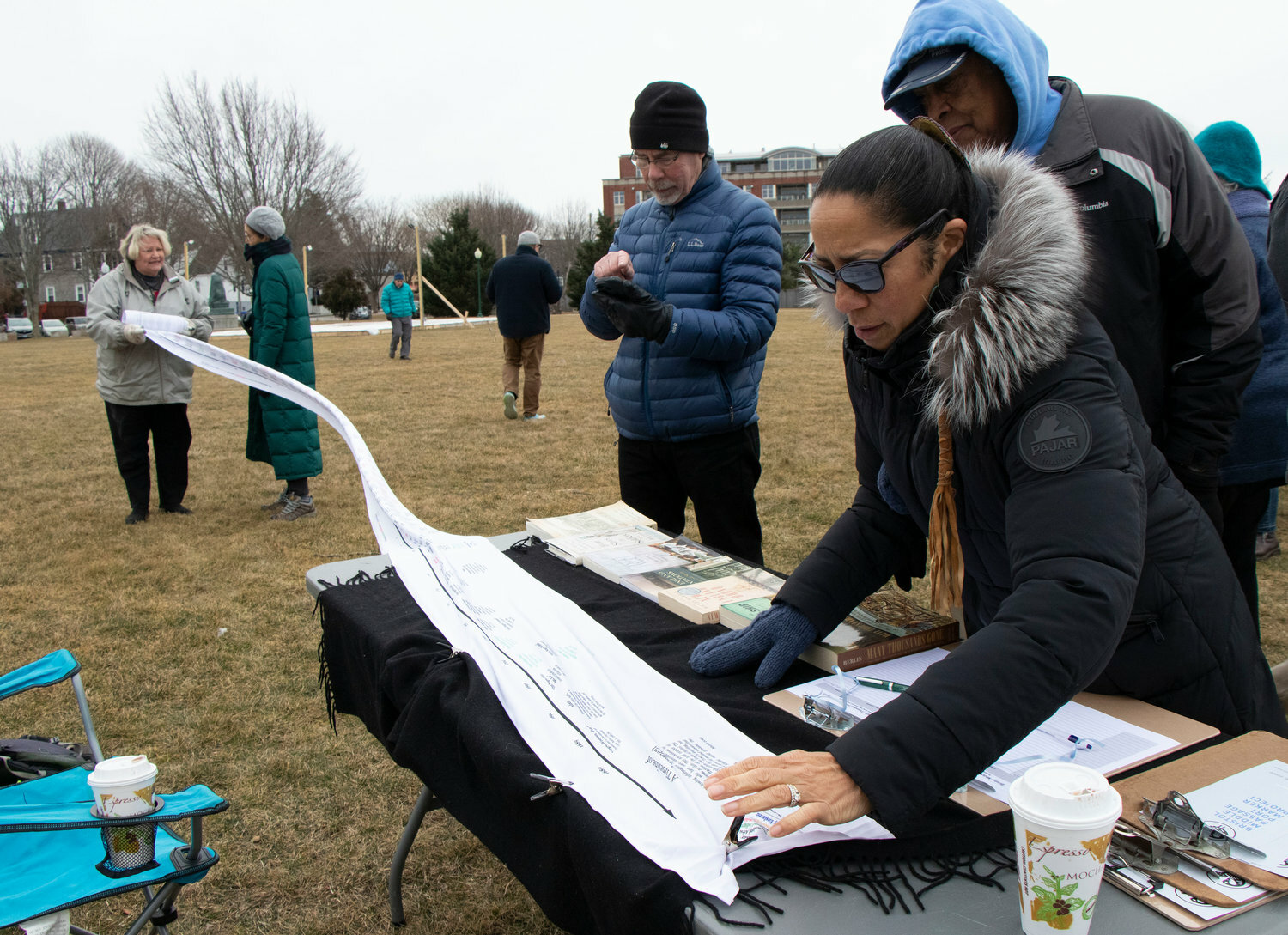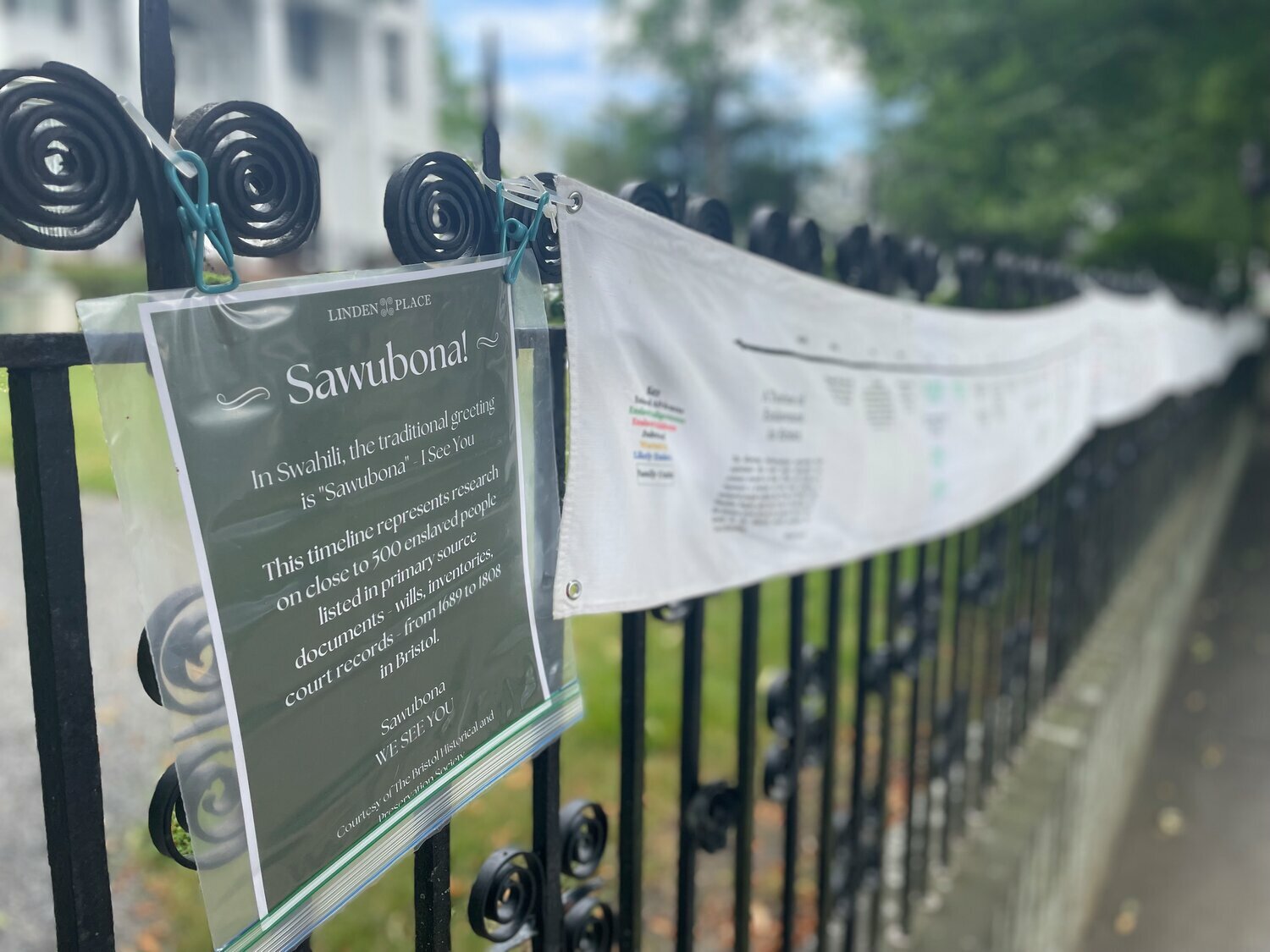Grant will help local group search for Bristol’s lost Black history
A $35,000 grant will go towards work on The Timeline of the Enslaved, the interactive database, and New Goree Research, as part of their goal to empower descendants with information to tell their own history, and to create open and accessible resources.
This item is available in full to subscribers.
Please log in to continue |
Register to post eventsIf you'd like to post an event to our calendar, you can create a free account by clicking here. Note that free accounts do not have access to our subscriber-only content. |
Day pass subscribers
Are you a day pass subscriber who needs to log in? Click here to continue.
Grant will help local group search for Bristol’s lost Black history
Research BIPOC History (RBH), a local, volunteer-led effort to research primary source documents in order to recognize and honor the history and contributions of the enslaved people who lived in and around Bristol from its founding in 1680 to the end of the 19th century, has received a $35,000 grant from the Tufts University Research and Scholarship Program, “Tufts Springboard.”
Sponsored by the Office of the Provost and Vice Provost for Research, Tufts Springboard is designed to contribute to the research and scholarship environment at Tufts, which includes an emphasis on Tufts’ racial justice efforts.
Tufts-based team members of the Research BIPOC History Springboard Grant Project include Dr. Elaine Donnelly, Director, Tisch College Community Research Center, Dr. Diane O’Donoghue, Director, Program for Public Humanities and Senior Fellow for the Humanities of The Jonathan M. Tisch College of Civic Life, and Kendall Reiss, Professor of the Practice at the School of the Museum of Fine Arts at Tufts University.
Reiss, a Bristol native and practicing artist with a gallery and studio at 469 Wood Street, serves as the group’s Project Leader.
“Our group came together in 2020 in the wake of George Floyd’s murder and as the issue of race entered the national conversation, in a way, that felt like a call to action,” she said. “We answered it with comprehensive, primary source research to try and identify the community of color who were enslaved in Bristol — both African American and Indigenous people — as well as the free black people who created the neighborhood known as New Goree.”
New Goree was a neighborhood, populated largely by free black residents, that came to be during the 1800s in and adjacent to the current site of Unity Park. By the 1900s it had all but vanished. The reasons why are not clear, but the presence of the large and growing National Rubber Company, first sited in the neighborhood in the 1860s, is thought to be a contributing factor.
“There hadn't been any comprehensive work done here in Bristol at that point,” said Reiss of the enslaved and free black population of Bristol. “So initially it was just a very loose group of people who were interested in doing this research that came together to see if we can figure out what that population looked like here.”
The nature of society in the 1800s means the group really has their work cut out for them.
“How do you build a story for people, bring this information back to a decedent community and connect that history back to the people for whom this narrative should be told?” asks Reiss. “These are the people that need to be able to control this history so that story gets told in a way that is respectful and not being driven by the voices that it has been driven by, historically.”
One of the group’s first efforts, in collaboration with the Bristol Historical and Preservation Society (BHPS) and Linden Place was The Timeline of the Enslaved, a 56-foot-long strip of fabric that lists in chronological order the names of those who were enslaved in Bristol between 1680 and 1808. All those identified occupy their own space on the timeline, regardless of how much or little is known about them. The approximately 600 entries represent 475 enslaved individuals in total.
The $35,000 grant will go towards expand RBH’s work on The Timeline of the Enslaved, the interactive database, and New Goree Research. It will also allow them to add a Descendant Advisory Council, as part of their goal is to empower descendants with information to tell their own history, and to create open and accessible resources.
By making this information accessible, public, free, and shareable, RBH’s goal is to empower descendants to locate and identify ancestors, research their history, and tell their stories.
“I hope this really starts to open things up more here,” said Reiss, of the former New Goree neighborhood in which her current gallery now sits. “How might we as a community think about what could happen in New Goree, so the people who are just visiting here, going to get a pizza or something, might also be able to learn about the community that was here for quite a while?”
“There's a lot more to learn, that's the bottom line.”
For more information about RBH and their efforts, visit www.researchbipochistory.org.









